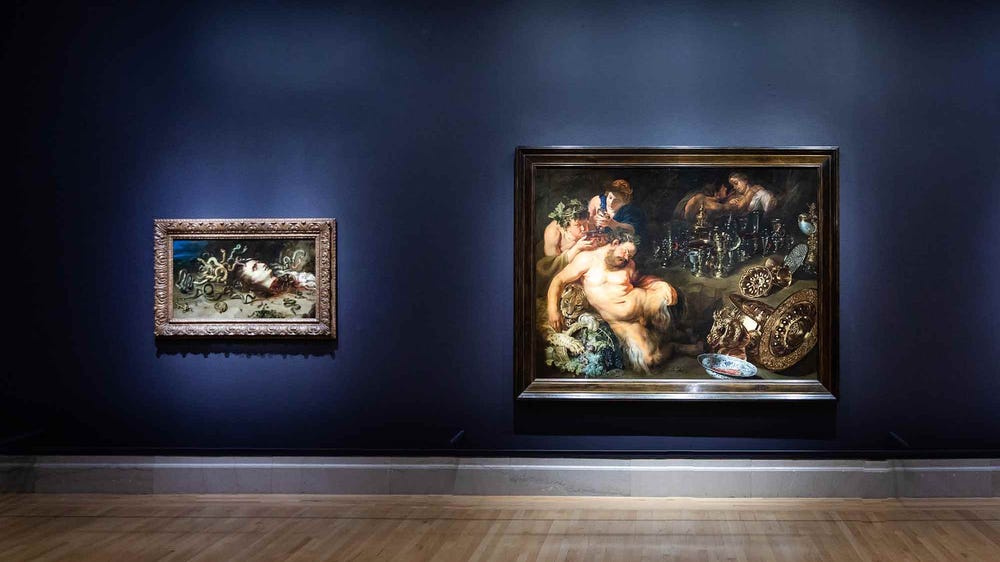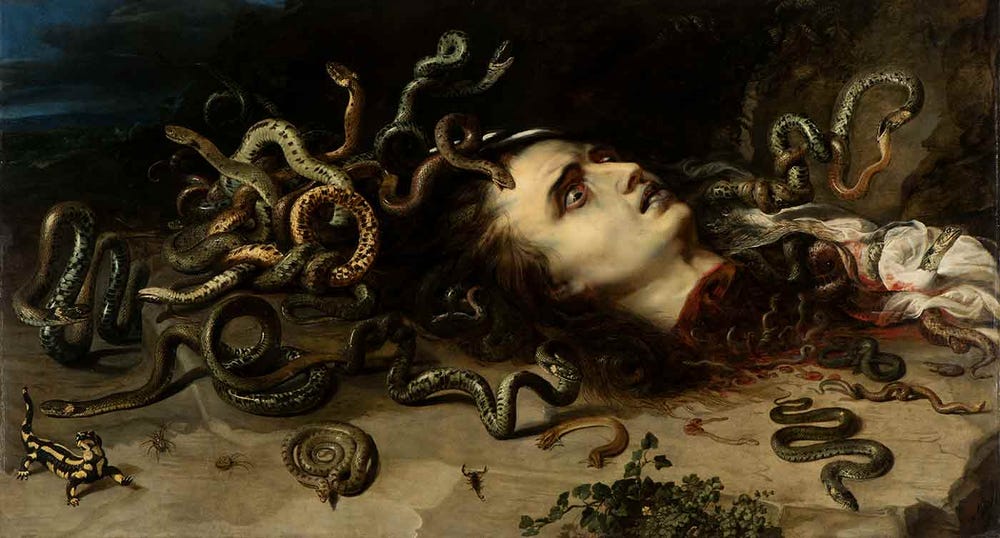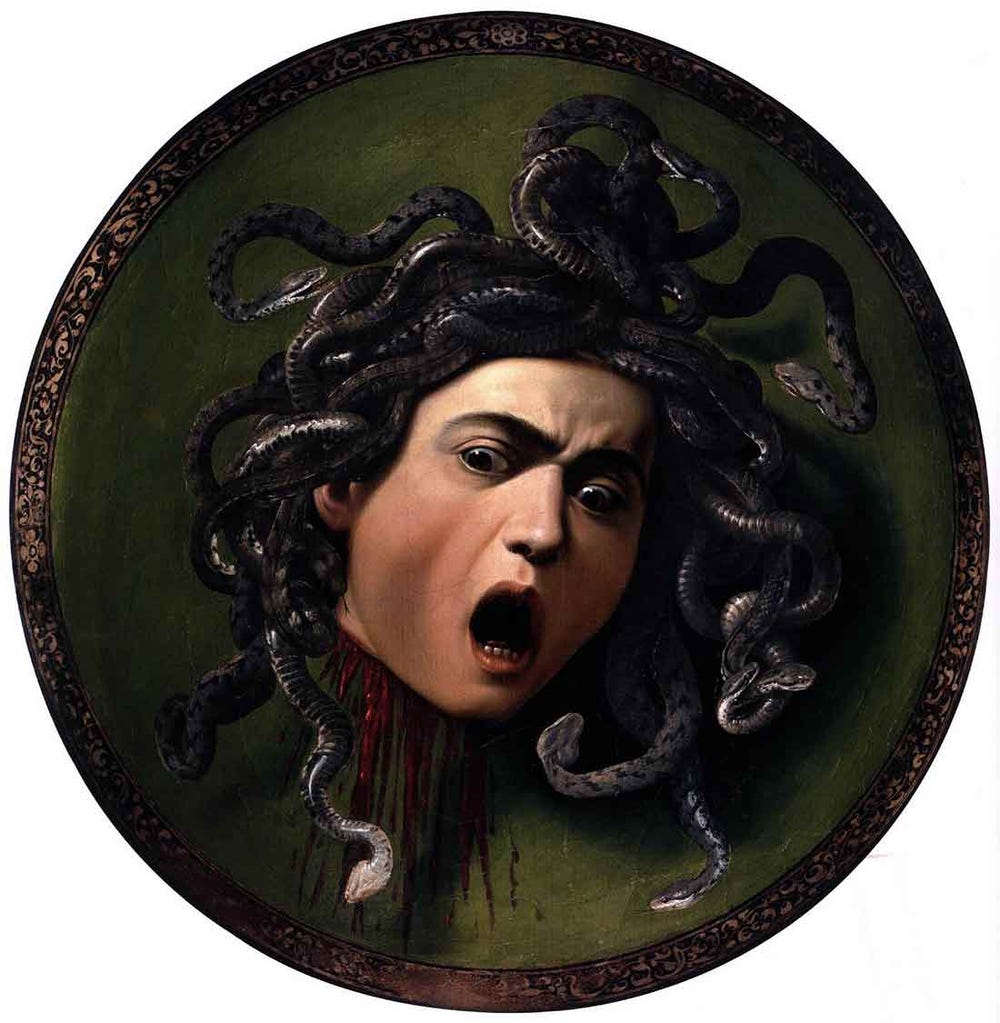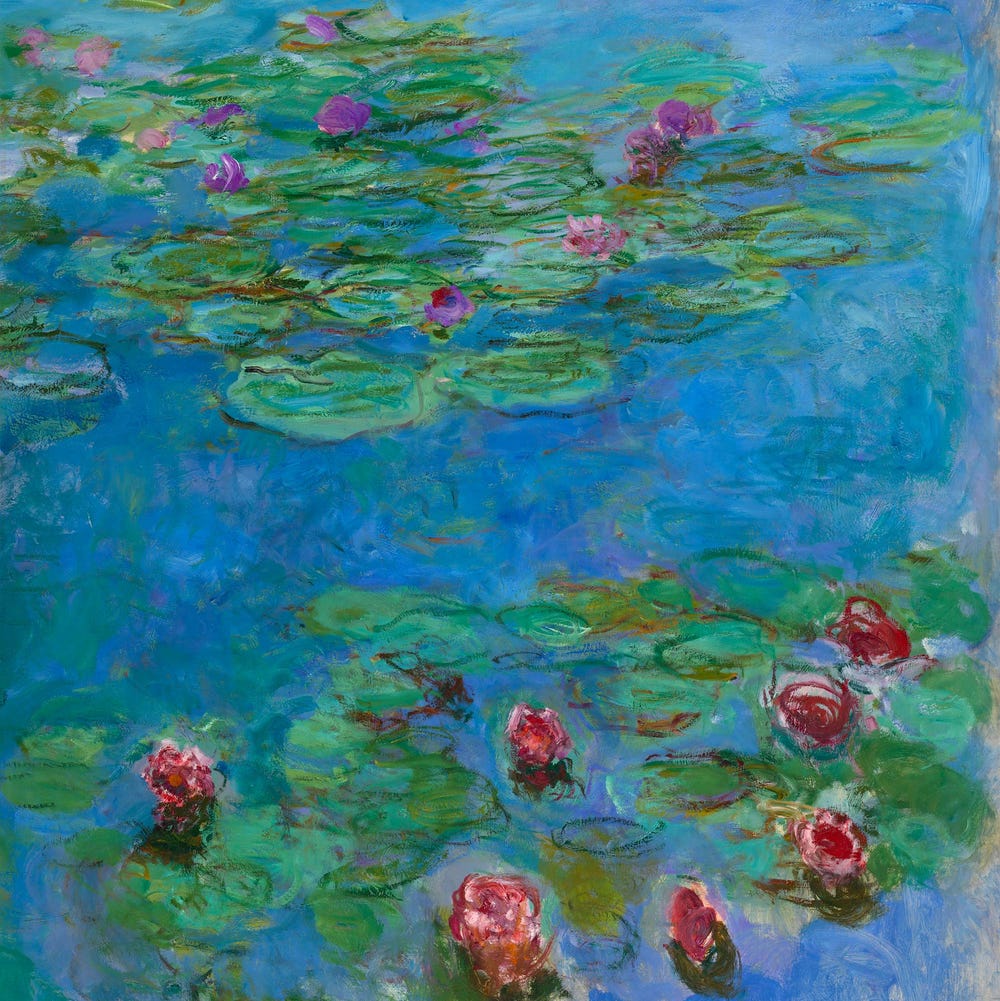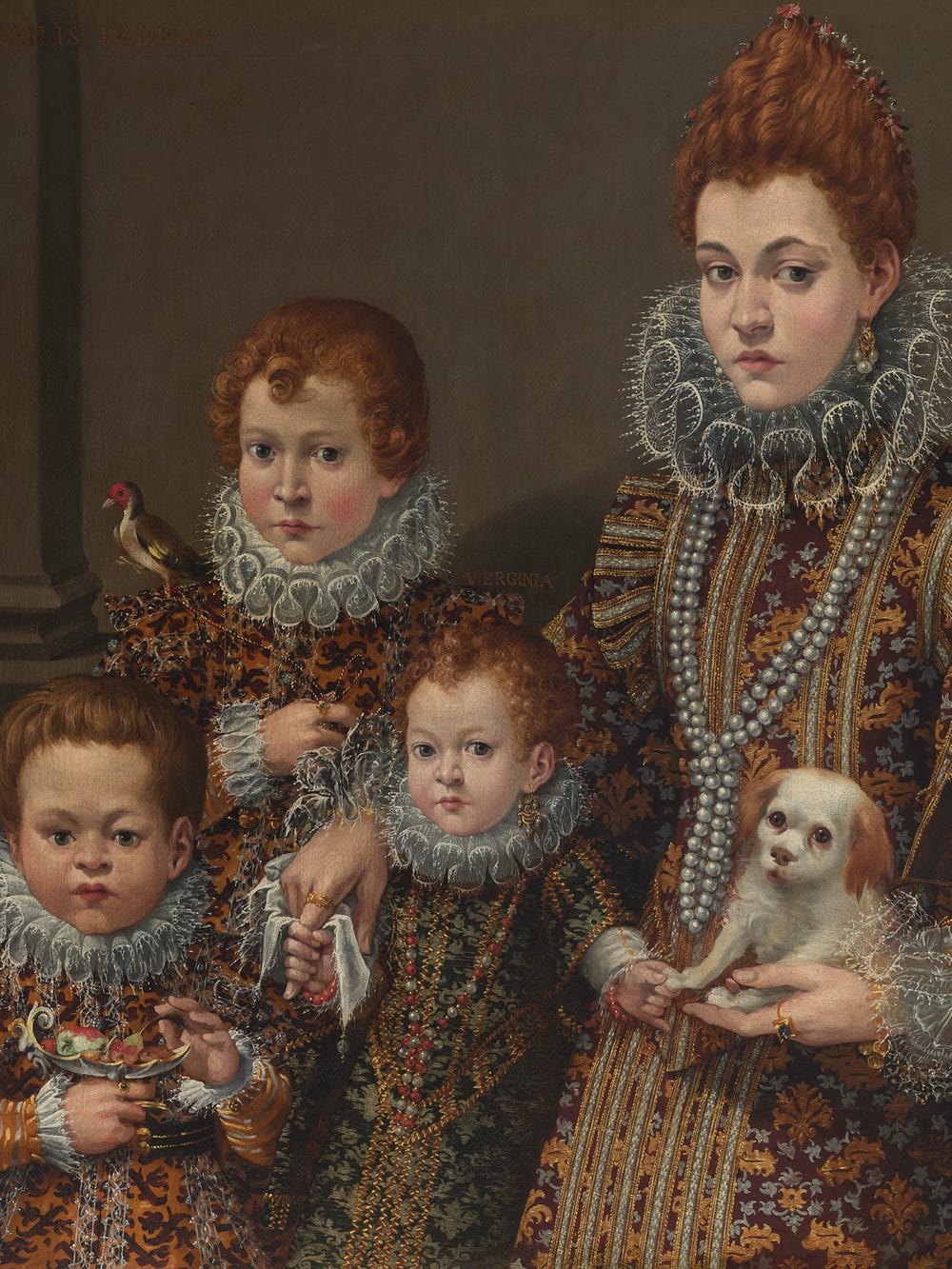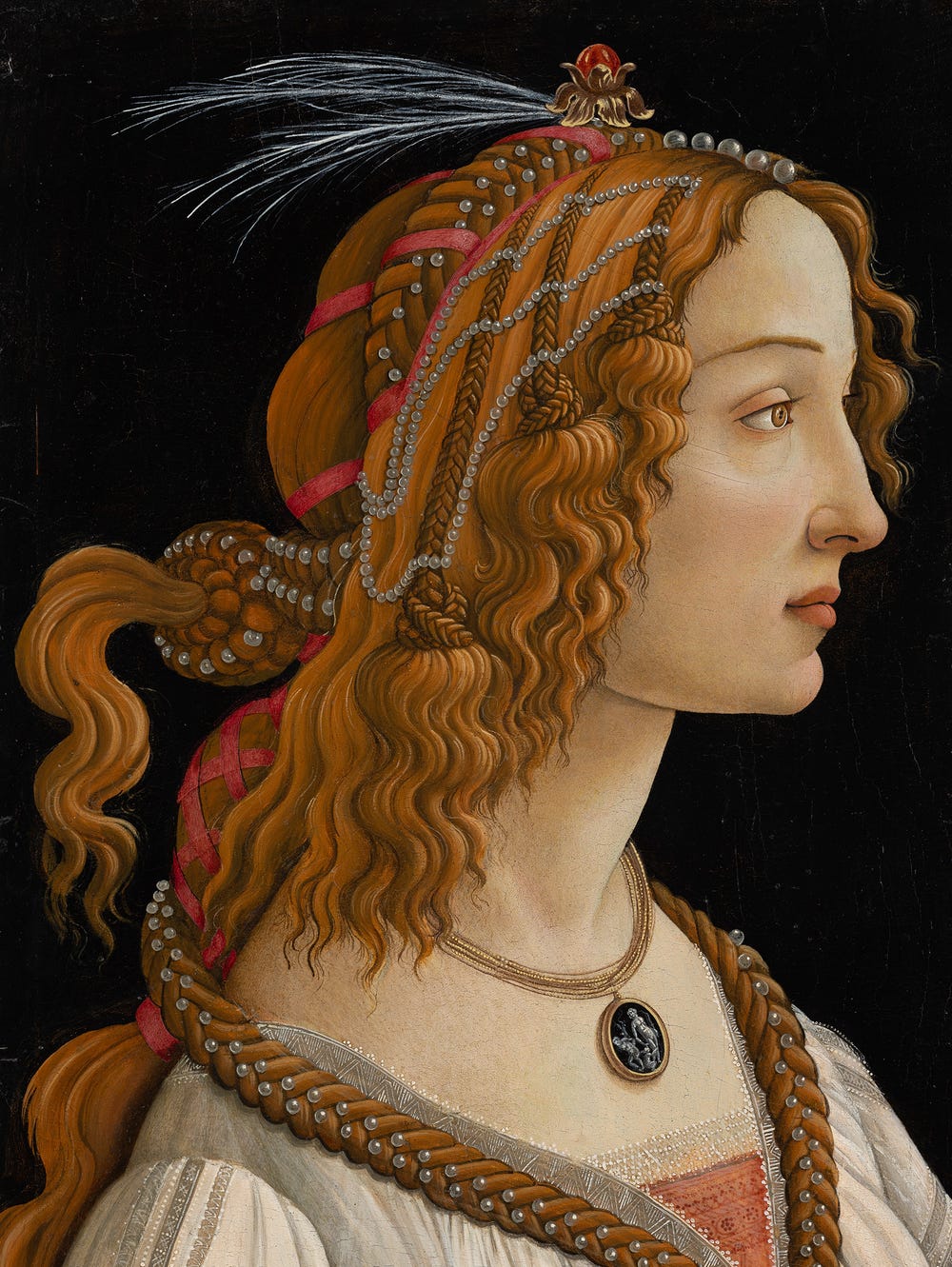Thomas B. Campbell, director and CEO of the Fine Arts Museums, has said that Peter Paul Rubens had a “Tarantino-like taste for the macabre.” Rubens’s interest in dark subject matter is especially evident in his riveting Head of Medusa in the collection of the Brno Museum in the Czech Republic, a work featured in the special exhibition Early Rubens at the Legion of Honor. While on view in San Francisco, Medusa captured the imaginations of visitors, who also seemed to have a fascination with spooky themes. Below is an excerpt from the exhibition catalogue, which delves into the conflicting qualities of Rubens’s Head of Medusa.
Peter Paul Rubens, Head of Medusa, ca. 1617–1618. Oil on oak panel, 24 x 48 in. (60.6 x 122 cm). Moravian Gallery in Brno, K.K.Ackerbaugesellschaft, 713/1818
The macabre fascination in Rubens’s arresting image of Medusa lies in the tension between attraction and repulsion. Emotions oscillate between delight in the vestiges of beauty remaining on the victim’s face and disgust at the hyper-realistic entanglement of grisly snakes and bursting arteries. The contradictory reactions it arouses are vividly encapsulated by the Flemish statesman, Humanist, and poet Constantijn Huygens. In his autobiographical account from 1629, he describes his first impression of Head of Medusa which he encountered at the house of an Antwerp merchant:
Constantijn HuygensThere is the compelling painted head of Medusa, wreathed by snakes that spring from her hair. The countenance of the extremely beautiful woman has its grace still persevered, but at the same time evokes the horrors of the fitting beginning of death and the wreath of hideous snakes. The combination is so shrewdly executed that the spectator would be shocked by the sudden confrontation . . . but at the same time is moved by the lifelikeness and beauty with which the grim subject is rendered.
According to Ovid, Medusa was the most beautiful of Phorcys’s three daughters and was greatly admired for her hair. One day, an enamoured Neptune violated her in the sacred Temple of Minerva, provoking the goddess to transform Medusa’s prized tresses into a loathsome crown of snakes as punishment. Thereafter, anyone who gazed at Medusa’s hideous visage would turn into a stone. However, the cunning Perseus, using the reflection on his mirror-like shield as a guide, followed and decapitated her while she lay asleep. Subsequently, her head would become a resourceful weapon in his heroic adventures until he presented it to Minerva for the decoration of the aegis.
Michelangelo Merisi da Caravaggio, Medusa, ca. 1598. Oil on canvas mounted on wood, diameter 58 cm. Galleria degli Uffizi, Florence
Unlike popular apotropaic depictions of Medusa on a shield or breastplate — like Caravaggio’s iconic version at the Uffizi — Rubens places the brutally decapitated head on a precipice set against an ominous, nondescript void. Here, it lies haphazardly on the ground, as if it had just been freshly severed by Perseus’s sword; the oblique view exposes the stump of the neck in all its gore. Rubens intensifies the violence of this sparse landscape by incorporating two vipers caught in the act of a deadly mating ritual, and a scattering of flesh-hungry snakes. Elsewhere, spiders, a lizard, and a two-headed amphisbaena add to the chaos.
Perseus is obviously absent, leaving the narrative moment vague; however, the dry terrain evokes the poet’s account of the hero’s journey over the Libyan desert, during which droplets of blood, upon touching the sand, morph into snakes. The minimalist narration directs the viewer’s attention to the grey-green pallor of Medusa’s skin, the silent scream emanating from her gaping mouth, and the downward gaze of her bloodshot eyes toward the coagulating mass of surging arteries and snakes. The outcome is a portrait whose vivid expressiveness, verisimilitude, and virtuosic technique are indeed “unforgettable,” to quote Huygens.
This text is excerpted from Early Rubens, edited by Kirk Nickel and Sasha Suda and published in 2019 by the Art Gallery of Ontario and DelMonico Books • Prestel.
Learn more about Early Rubens at the Legion of Honor.
Further reading
- Anne T. Wolleett in Anne T. Woollett and Ariane van Suchtelen, Rubens and Brueghel: A Working Friendship (Los Angeles: J. Paul Getty Trust, 2006), 182, exh. cat. no. 24.
